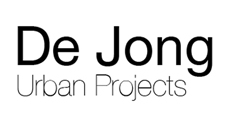How the Strip Mall Can Save Suburbia – Remix
Architecture can catalyze new ways and forms of life in urbanizing suburbs. But rather than simply import traditionally urban forms, How the Strip Mall Can Save Suburbia – the Remix proposes that the often vilified standard forms and conditions of suburbia – here, the strip mall and the superblock – can be the generative agents of suburbia’s re-formation.
The strip mall has a remarkable systemized flexibility; it can accommodate many program, be deployed many places, and produce many versions of its standard form. However, this potential has never been fully explored; rather, in its current guise, the strip mall typically produces islands of architectural and programmatic sameness, further isolated by seas of surface parking. How the Strip Mall Can Save Suburbia – the Remix proposes a new, opportunistic strip typology that maintains a formal clarity while simultaneously adapts to the specific conditions of its implementation. A base of retail, live/work, and/or civic programs is stacked with housing typologies that can be adjusted – in type and density – for the target audience(s). Parking, which remains a crucial condition of suburbia even in walkable scenarios, is “flipped” behind the strip, creating a new programmatic zone at the street that can not only reflect adjacent conditions, but also project new uses. Residential parking sits between the base and top, revealing the sculptural and kinetic qualities of the car, and providing easy access to the walk-up residential units. Flipped on its end, the classic strip mall shape becomes residential towers that amplify formal identity and long-distance visibility – and provide an alternative housing type. How the Strip Mall Can Save Suburbia – the Remix can be deployed across medium or large sites, but is particularly effective at the scale of the suburban superblock, where its formal potential and adaptability become most explicit.






Leave a Reply
You must be logged in to post a comment.